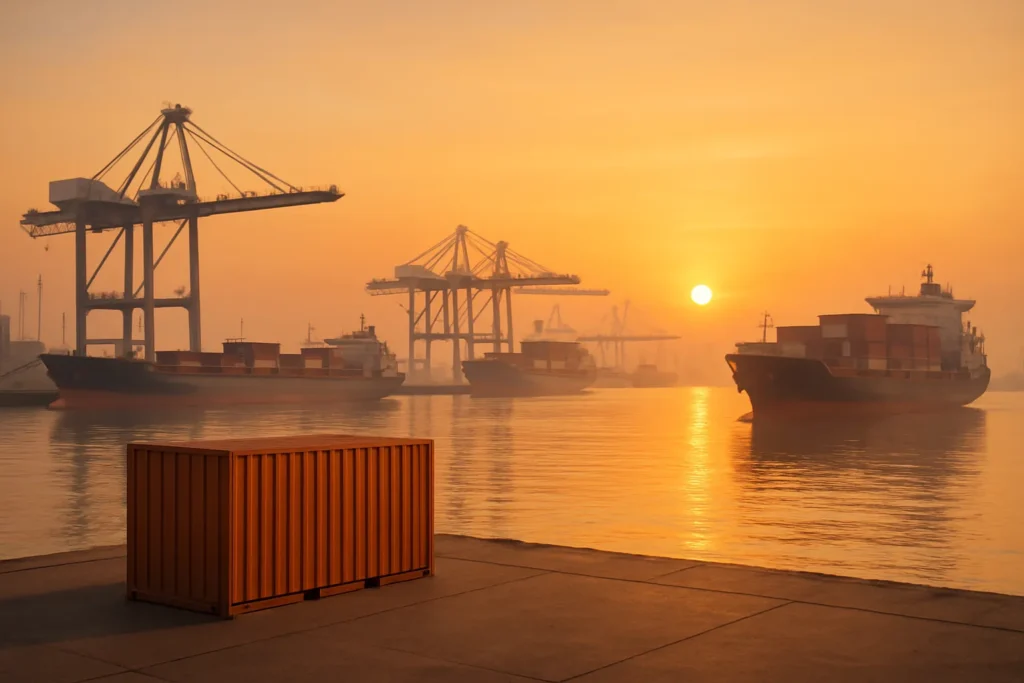High Seas Rally: Shipping Stocks Soar on Tariff Pause
It began with a brief announcement—a 90-day truce in the U.S.-China tariff war—and the ripple effect was immediate and sweeping. At opening bell, shares of shipping and transportation giants surged, none more dramatically than ZIM Integrated Shipping Services, which climbed over 13% in value. A wider rally lifted A.P. Moller-Maersk, Hapag-Lloyd, and household-name U.S. logistics leaders like FedEx and UPS, whose shares spiked by nearly 6%. The apparent cause: Washington and Beijing agreed to slash previously punitive tariffs, cutting U.S. rates on Chinese products from a staggering 145% to 30%, while China lowered its reciprocal tariffs on American goods from 125% to 10%.
Such a dramatic market reaction underscores investor relief following months of fraught trade headlines and mounting anxieties. For companies whose profits sink or swim on undisturbed global commerce, these temporary tariff reductions felt like a rare lifeline amid deeply uncertain seas. Ships, containers, and supply chains—the dull logistical superstructure of globalization—came roaring back into favor, if only for the moment.
Still, while the truce buoyed markets and set shipping tickers awash in green, the fundamental drivers of the U.S.-China rivalry remain unresolved. As Jane Doe, a Harvard economist specializing in international trade, noted, “Market optimism is understandable, but long-term uncertainty hasn’t gone anywhere. Tariffs may be reduced for now, but companies are still reassessing supply chains based on the likelihood of future shocks.”
The Fragile Foundations: Winners, Skeptics, and Lingering Concerns
Beyond the rally, a closer look reveals that many analysts caution against irrational exuberance. Jefferies equity analyst Omar Nokta, for instance, flagged ZIM as a short-term winner yet pointed to a cloudy horizon. Despite the post-truce spike, Wall Street’s consensus for ZIM is an “Underperform” rating—hardly a vote of confidence. Their one-year price outlook averages a modest $15, with the most optimistic scenario topping out at $22, and GuruFocus’s GF Value estimate suggesting an actual decline is possible.
Why the measured tone? Shipping, by its nature, is a bellwether of global confidence. While the U.S.-China pause granted tactical relief, the fact remains that tariffs—though temporarily eased—still hover at relatively high levels compared to pre-trade war norms. The 30% U.S. tariff notably includes an extra levy linked to China’s role in the fentanyl crisis, reflecting both economic and geopolitical friction. According to the Peterson Institute for International Economics, “piecemeal de-escalations often offer little certainty for long-term planning.” Companies hesitate to make permanent shifts when truce after truce can quickly unravel—just as they did amid past U.S. presidential transitions and political mood swings.
“The temporary thaw in U.S.-China tariffs isn’t a structural remedy—it’s a Band-Aid over deep, festering wounds in global trade.”
Shipping executives know this too well. They recall 2018’s market chaos as tariffs began escalating, only to recede during diplomatic overtures, then spike again amid rhetoric or retaliatory measures. As one logistics manager at Maersk (who requested anonymity) described: “We keep our bags packed. The tariffs roller coaster has made long-term planning nearly impossible, forcing us to hedge, diversify, and invest in contingencies rather than growth.”
The Real Costs: Short-Term Gains vs. Sustainable Trade Policy
Stock market celebrations, though cathartic, obscure a crucial reality: the underlying causes of the tariff battles—competition over technology, intellectual property rights, labor standards, and even pandemic-fueled supply chain chaos—have not been resolved. ZIM’s gains, as well as the bumps seen at Matson, Pangaea Logistics, and Dorian LPG, largely represent a relief rally, not a genuine transformation in their business outlook.
History offers a cautionary tale here. Tariff skirmishes between major powers have long triggered boom-and-bust cycles for transport and manufacturing—recall the shocks to American farmers and automakers after the U.S. raised tariffs on Japanese goods in the 1980s. These short-term profits faded as global supply chains found workarounds or shifted altogether, eventually hollowing out employment in vulnerable sectors. As Columbia University historian Adam Tooze warned in a recent keynote, “The political theater of tariffs often masks both their ineffectiveness in shifting deep economic patterns and the pain inflicted on ordinary workers.”
Diversification, near-shoring, and resilience—these are the watchwords echoing across today’s boardrooms. The current 90-day window may see a burst of orders and logistical activity, but smart money knows that true progress rests on real diplomatic breakthroughs, not piecemeal pauses. According to a Pew Research study this spring, more than 65% of Americans favor a comprehensive reset to trade policy, with an emphasis on fair labor standards, environmental cooperation, and multilateral enforcement of rules rather than tit-for-tat escalations or temporary truces.
Progressive policymakers argue that it’s time for a bolder vision: one that leverages trade as a force for inclusive prosperity, climate action, and global health. “A tariff reduction truce is a start,” observes labor organizer Maria Thompson, “but unless it comes with commitments to equity and sustainability, it merely papers over systemic risks.” America’s middle class, small businesses, and working families deserve better than a cycle of panic and relief dictated by unpredictable headlines from Washington or Beijing.

